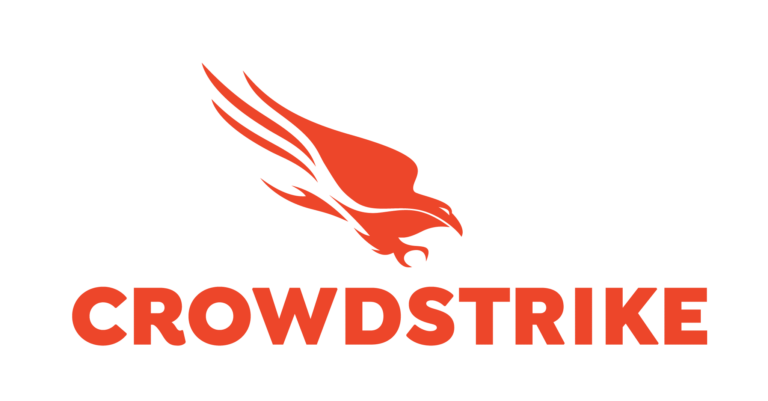Taking a few hours to get your team on the same page for your brand(s) reduces friction, lends clarity, and gets the whole team behind the same statements. If your internal team can’t get behind your brand with clarity and belief, how can your customers?
Capital-B Brand is esoteric
When you think of the word “Brand”, how do you define it?
Is it a personification, like Flo from Progressive? A mascot, like Ronald McDonald? A logo, like Apple? A phrase, like Nike? Or an attitude, like Wendy’s Twitter?
Is a brand the differentiator between your two pretty similar products?
If you were to ask a few people in your company right now what your company’s brand is, you’re going to get some different answers. Try it!
Send this message to a few randomly selected people (not just in the Marketing department) and see what you get back: “What would you say [our Company’s] brand is?”
If they give you hesitation or ask for clarification, state that you’re being purposefully vague and have them respond however they think is appropriate.
Take a look at the answers you got – I guarantee they not only used a different definition of brand, but defined your company completely differently. That’s okay! Even the most communicative companies need to reinforce the messaging and positioning of their brand regularly.
Perspectives differ
And it’s not even the definition of the term brand that can differ, it’s how your brand is defined by your own employees (not even mentioning your customers, which I won’t cover here).
Strategic planning should be more about collective wisdom building than top-down or bottom-up planning.
W. Chan Kim
One of our clients is an Entertainment & Music company with multiple brands, some of which had been around since the inception of the company, and some of which had yet to be launched.
I gathered the stakeholders of the company for a brand Workshop. Most had been with the company for many years, or were intimately familiar with the plans for these new brands.
At the beginning, half the room was disengaged, the other half only mildly engaged. A workshop like this was new for many of the participants – some responsible for managing physical stores, and some focused only on digital systems.
Once we started digging into questions about their umbrella of brands like what their purpose as a company is, the brand architecture, who the target market is, and how the brands are expressed, they started understanding that brand is more than a loose, hand-wavy concept.
They were shocked to hear each other’s answers to some of these branding questions. The room went from passive and leaned-back with little discussion to lots of cross-talk, leaning forward, and laughter.
Each person individually had a clear-to-them idea as to what the brand was, but they hadn’t articulated it to each other. It was new for them to discuss as a team. “We’ve never said it out loud before!” was a common refrain.
The result of the end of this: They had a clearly defined brand architecture document, which delineated parent and sub-brands. For each of their 6 brands (they initially had 10 and we consolidated at the workshop), they had: Brand purpose and definition Target audience demographics and psychographics Brand attributes – fun/funky/progressive, not efficient/traditional/etc. What the brand sounds like (specific copy examples) Everyone was on the same page. They subsequently distributed this information to their entire team, down to servers at the restaurants.
The entire team has to be on board. Not just leadership or individual department like marketing or engineering.
Another case: an industry-leading video gaming company came to us to help them migrate their servers from hardware to the Cloud (a very scary proposition when you have 125,000 active users every minute).
At the same time, they asked us to redo their website. It was outdated, barely functional, and served no real purpose.
In an ideal world, there would be a project team made up of representatives from each department of the company, where each has a voice in how the website functions and fits into the overall vision for the company. The goal: ensure consistency in messaging, from customer service to product, to operations, to marketing.
Unfortunately, that doesn’t always happen. One group is tasked with the project (or they just take it on) and they go full-bore, without bringing in others to slow down the process. This is natural.
The scenario that we’ve seen play out over and over is that if marketing or other stakeholders aren’t involved from the start, they will step in at the last 10% and add scope creep, require re-examination and re-visiting of decisions, and cause general internal misalignment.
Worst case is it brings everything to a grinding halt, causes contention amongst the team, and wastes one of the most valuable resources: time.
Before any work begins, it’s important to define not just how the website will function, but why it exists, who it exists for, and what stakeholders across the company need from it.
It is imperative to make sure everyone is aligned on what it does and why it exists. Even if other departments decide to leave the purpose, narrative, and content up to your department, they should be clear in what they are handing over.
A website is more than a place to store information; it is the public representation of your brand and company, and where all business units are represented. It should be the shared foundation for content strategy, marketing strategy, future growth, product, product marketing and more.
Consistency is key and defining + distributing is important.
Once you have the brand defined and agreed upon by stakeholders, the next milestone is getting everyone onboard with the idea. Every. Single. Employee. Full-stop.
From the product packer in the warehouse to the VP of Engineering, all company representatives need to understand what the brand is about, who it’s for, and why it exists. If everyone gives a different answer to “So what does [your company] do?”, it weakens the consistency and the overall power of the brand.
You know it’s important, but it really is critical – a person has to hear a message an average of seven times before they really ‘hear’ it or understand it.
Most of us know the marketing concept of good communication. To make a message stick in the head of a future consumer, you need to deliver the message seven times using seven different channels. Why do executives think that to make a strategy stick, a boring speech delivered once will be enough?
Jeroen De Flander
So, you’ve had this big mysterious brand workshop where all the top-level people and important stakeholders (e.g. company influencers) come out laughing and talking about how clarifying this workshop was. That’s great. But if a tree falls in the forest, and nobody talks about it at the all-hands, did it really happen?
The key to all this effort is to make sure this gets disseminated to the rest of your company! Do a summary or write-up, or talk about it at the next town hall.
Then make a little brand cheat-sheet for front-line employees in social media, front desk or retail counters, and especially for communications and customer service. This tactic will be instrumental in helping focus their communications and keep everything in line with what your brand represents down to how it should sound.
For a car-sharing company with an extensive and dispersed customer service organization (we’re talking internal email and call centers at headquarters in Texas, internal call centers in Vancouver and Montreal, and third-party call centers in Nebraska) brand cheat sheets were distributed and physically stuck on the wall by their desks.
Does that sound extreme? It wasn’t! There was a lot of positive feedback from employees who felt empowered to represent the brand without sticking to a prescribed script.
So, what does a brand workshop look like?
We recommend a working session where we bring stakeholders from marketing/communications, development/technology, and leadership into a room to ensure that the ultimate business purpose of the brand, what it is and how it is defined, is agreed upon by all parties.
Overall though, it varies for each company based on their needs. For the Entertainment & Music client mentioned previously, they also needed to determine their brand architecture. For the car-sharing company, there was only one brand, but global implementation and country-specific adaptations had to be considered as well.
It’s best to do this workshop all in one session or over a two-day period, while people are warmed up and thinking about brand in a new way and open to new ideas.
Generally speaking, a workshop should cover:
- Business Purpose and Vision Messaging Positioning, and Target Audience(s)
- Primary messages and benefits
- Positioning relative to other offerings – not just medical, but lifestyle
- (Strengths, Weaknesses, Opportunities, Threats)
- Target Audience(s) – Informed by market research and your experience.
- Defining who they are, how they think, and what their true needs are.
- Brand Attributes and Voice and Tone e.g. “Our brand is Cool, Innovative, and Elite.
- Our brand is not Traditional, Eclectic, or Broad. We have an inspirational tone, and never use the passive voice.”
Who to invite?
While the go-to is the C-Suite or sometimes just Marketing, there should be a variety of attendees – obviously the C-Suite is important, and even those in Finance or IT are important. Also bring a few influencers from different departments, as they are closer to the customer and closer to the employees and will have valuable and unique insights.
Context Matters
Positioning and messaging can’t be done in a vacuum. It’s a collaborative process between everyone on your team to define and realize your company’s true vision.
Whether you lead this yourself, or bring in a team like ours to run it, the result will be that investing a few hours of your team’s time will lead to much better company and brand cohesion, both internally and externally to your market.




